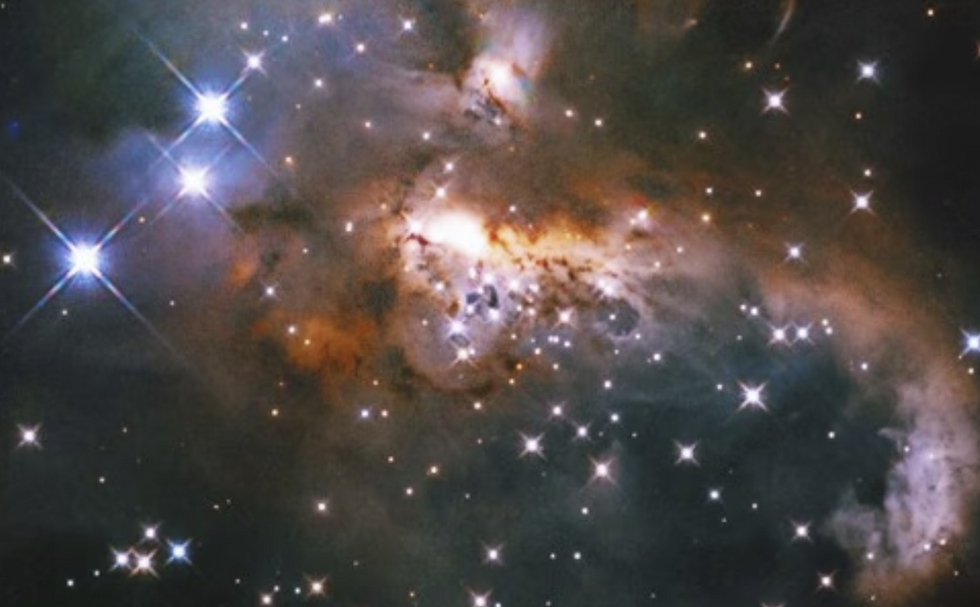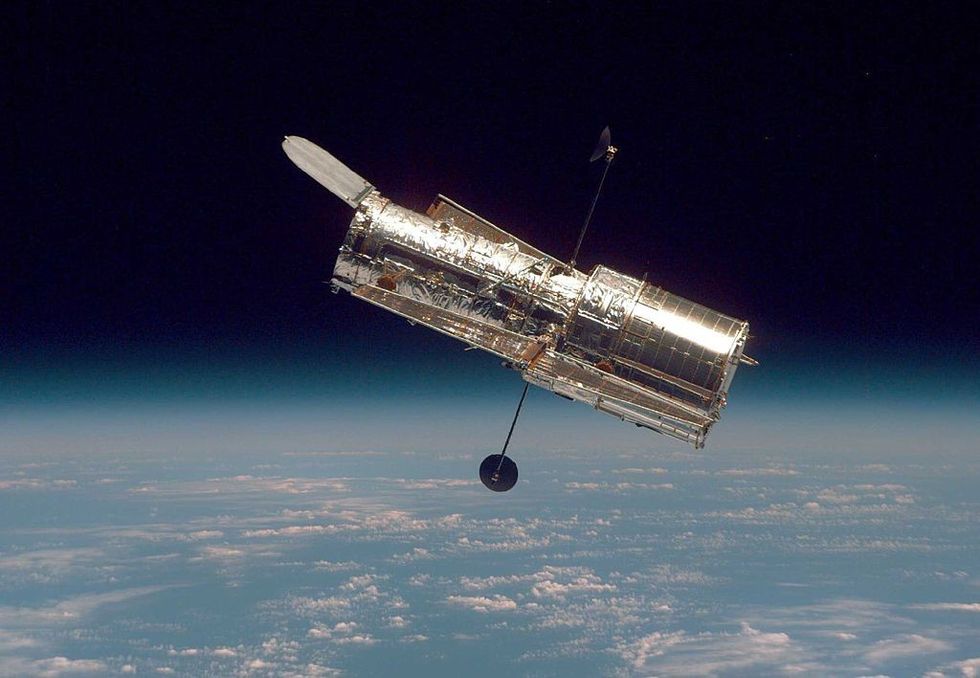Nasa telescope reveals incredible image of 'snowman' 6,000 light-years away from Earth - 'So beautiful, I will cry'

The Hubble telescope captured the remarkable snaps
Don't Miss
Most Read
Nasa's Hubble telescope has picked up an unusual image almost 6,000 light years away of what some said is a "snowman".
The telescope showed the formation of an emission nebula that formed the shape of a snowman.
Sharing the post on social media, the agency said the phenomenon happens when gas is charged by the energy of nearby stars causing the clouds of gas to form.
The post was liked over 61,000 times on social media.

The photo captured the phenomenon
|NASA, ESA, and J. Tan (Chalmers University of Technology); Processing; Gladys Kober (NASA/Catholic University of America)
The caption read: "Do you see the 'snowman' in this Hubble image, near the top? The beautiful Snowman Nebula is about 6,000 light-years away.
"Classified as an emission nebula, these diffuse clouds of gas have become so charged by the energy of nearby massive stars that they glow with their own light."
The post had split opinions with some flagging up that they could spot the pattern, with others struggling to see the likeness.
One said: "Am I the only one not seeing it?" with another adding: "Where the hell do you see a snowman?"
However, others disagreed saying: "This is so beautiful, I will cry." with another saying: "A cosmic spectacle, where the artistry of the universe manifests in celestial forms."
LATEST DEVELOPMENTS

The Hubble telescope took the picture
|Getty
It comes after astronomers at the University of have detected the world’s oldest black hole ever using Nasa’s James Webb Telescope.
The black hole is eating its host galaxy to death at an astonishing speed and dates back 400 million years after the Big Bang, more than 13 billion years ago.
Professor Roberto Maiolino, who led the study, said: "It’s very early in the universe to see a black hole this massive, so we’ve got to consider other ways they might form.
"Very early galaxies were extremely gas-rich, so they would have been like a buffet for black holes."
Last week, a US spacecraft which attempted to land on the moon surged towards Earth after it failed to complete its mission.
The Peregrine Mission-1 lunar lander departed Earth on January 8 and was scheduled to land on the moon on February 23.
However, the spacecraft, the first-ever private US Moon lander mission run by Astrobotic, began to leak propellant just hours after it was launched from Cape Canaveral Space Force Station, Florida.
Astrobotic will have another opportunity to land on the moon later this year with the Griffin lander which will transport Nasa’s VIPER rover to the lunar south pole at the end of 2024.











